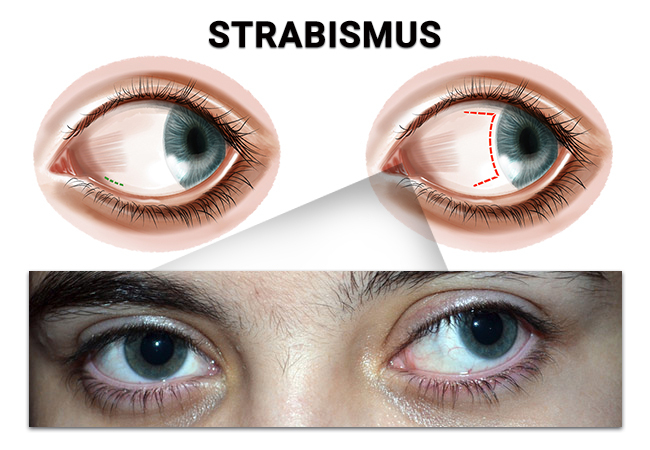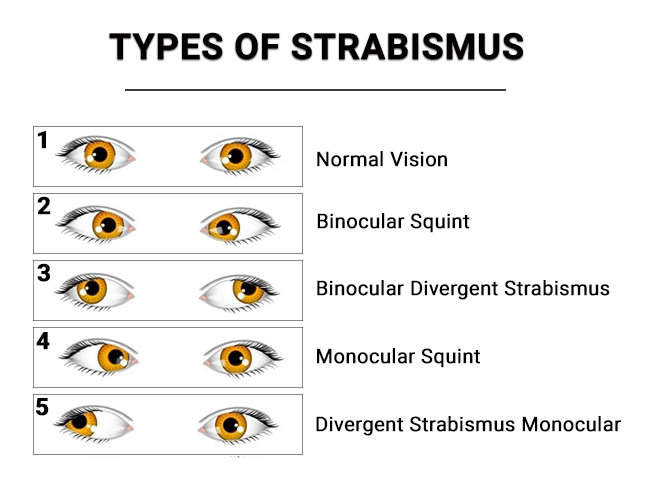 (212) 861-9797
(212) 861-9797
 (212) 861-9797
(212) 861-9797
Crossed eyes, technically called strabismus, carry a two-fold effect: the condition impairs proper vision, and it wears away at your self-esteem when you’re dissatisfied with your appearance. To correct both problems, rely on experts at strabismus eye correction to get a proper diagnosis and effective treatment. In New York City, find the most experienced and highly trained ophthalmologists at Vitreous Retina Macula Consultants of New York (VRMNY). They have convenient locations in Manhattan, Brooklyn and Westchester to successfully treat cross eyed conditions in both adults and children. Call today for an appointment.
Strabismus, more commonly referred to as crossed eyes, is a condition characterized by the misalignment of your eyes. Your eyes don’t line up as expected. In fact, they point in different directions. Each eye has six muscles that control its movement, and your brain controls these muscles. To accurately focus on an image, the muscles must work together. If the muscles don’t work as they should, it may lead to crossed eyes, which affects proper vision.

Crossed eyes disorder affects vision because the brain receives two images at the same time. In a child, the brain learns to ignore the image from the misaligned eye, but as a result, the child experiences poor depth perception. For an adult, the normal eye becomes dominant and has normal vision strength. The misaligned eye then suffers poor vision.
Early diagnosis of strabismus improves the effectiveness of the treatment. The experienced eye specialists at Vitreous Retina Macula Consultants of New York (VRMNY) effectively treat the eye disorder both in children and adults. The eye doctors use a combination of advanced in-office procedures, medications and surgery to treat a broad range of eye disorders.
Considering the importance of vision and the numerous serious diseases which pose a life changing threat, there is no room for error. The finest eye specialists in the country are found at VRMCNY. I have been a patient there for decades and have been seen by several doctors. They define the meaning of expert and consult with one another to ensure accuracy. The office is spotless. The staff is courteous and professional. The visits are usually time consuming due to the necessity of imaging and a preliminary exam with a technician before seeing the specialist. I consider myself fortunate and am very grateful to be a patient there.
RENEE B. GoogleDoctors classify strabismus based on the direction of the eye misalignment. Categories of strabismus include:
Any form of strabismus affects your vision and negatively impacts your self-image. Your eye doctor at VRMNY — with offices in Manhattan, Brooklyn and Westchester — evaluates your eyes and creates an individualized treatment plan. By leveraging the latest eye treatment technologies, your expert ophthalmologist correctly diagnoses your eye disorder to create a successful treatment plan.

Strabismus eye disorder occurs when there’s a problem with the muscles controlling your eye movements. Any abnormality in the neuromuscular control of your eye movement can lead to eye misalignment. In children, strabismus has no known cause. Children from a family with a history of eye misalignment are at a higher risk of the eye condition. Some conditions associated with eye misalignment include:
Through advanced diagnostic imaging and other tests, your eye doctor identifies the cause of your eye misalignment. The diagnosis helps the doctor create a tailored treatment plan suited for your type of eye misalignment.
Strabismus treatment starts with a consultation at your NYC ophthalmologist’s office. The doctor examines your eyes and carries out vision tests. Effective options available for the treatment of crossed eyes include:
After your diagnosis, the eye specialist may choose a single or multi-faceted treatment plan. The eye doctors at the New York City eye facility use the best treatment plan, including conservative treatments and cross eye correction surgery for the best outcomes.
If you notice eye misalignment in your child or if you have the problem, consult an experienced eye specialist for effective treatment. The eye specialists at Vitreous Retina Macula Consultants of New York are highly trained in diverse eye treatments, such as cross eye correction surgery, lazy eye strabismus surgery and bilateral strabismus surgery. Contact the best eye doctors today for effective eye treatment.
Let us help you enjoy your life
Call: (212) 861-9797To Speak With An Appointment Coordinator Now